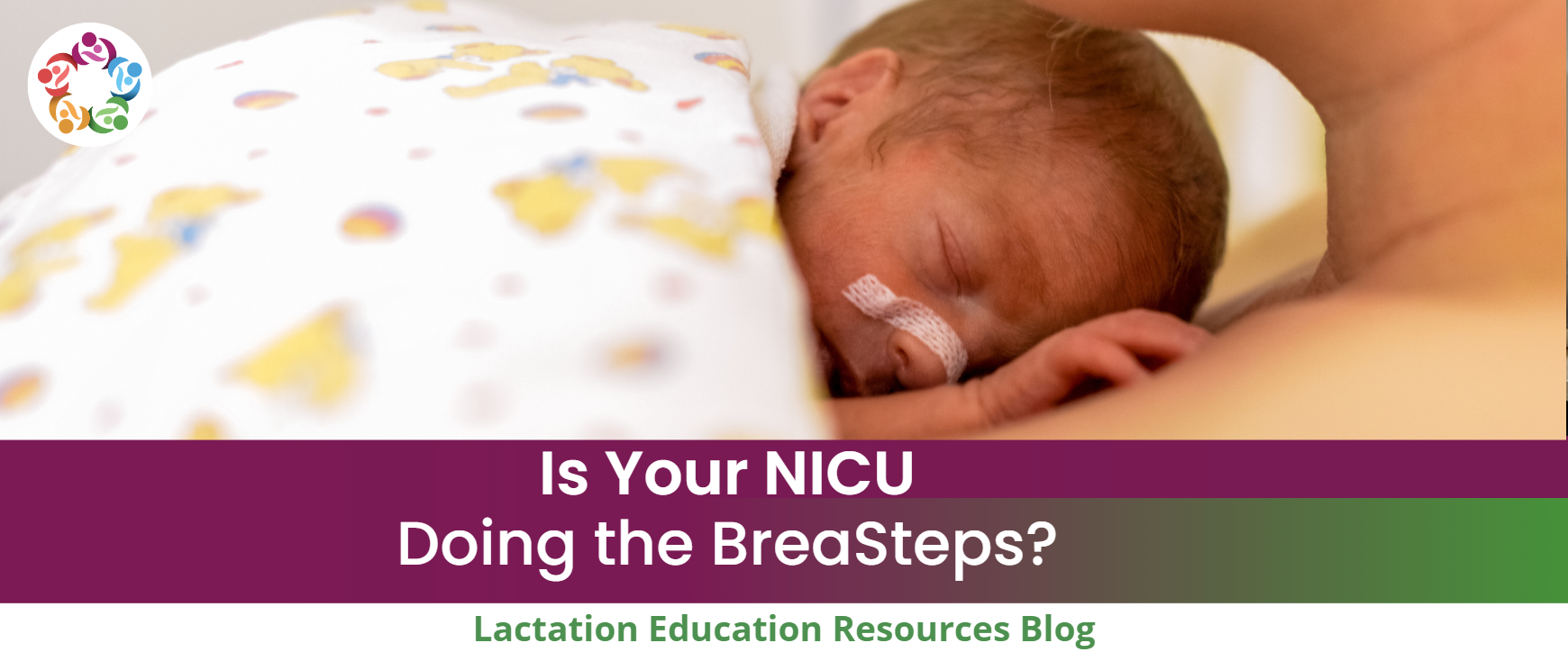Is Your NICU Doing the BreaSteps?


For parents of premature babies and the NICU staff who take care of them, it’s a mountain-top moment: the first time the baby latches and takes significant milk at the breast or chest.
Finally!
But here’s what often isn’t seen in that moment: That accomplishment was built on moments that are sometimes considered failures.
The baby is placed at the breast but doesn’t latch. Or the baby latches, and then simply stays there, not actively nursing.
In these moments, parents and providers alike can become discouraged … after all, it certainly doesn’t look as if the baby is “doing anything.”
But what if, instead of being met with discouragement, those tiny, easy-to-miss milestones are recognized, celebrated, and understood as key pieces of the process?
There’s an approach that allows you to do just that, and as a lactation care provider who works with premature babies and their very special families, it’s a tool you need in your toolbox.
BreaSteps Basics
Valerie Goodman, RN, IBCLC, a lactation consultant at the University of Virginia Medical Center and a veteran NICU nurse, realized that NICU parents and providers needed a framework for their work toward breastfeeding — one that recognized, celebrated, and capitalized on the natural neurodevelopmental stages premature babies go through.
So she created BreaSteps, a systematic tool for describing preterm babies’ developmental stages from birth to full feeding at the breast or chest.
The Five Steps
BreaSteps describes the following stages and gives guidance on how to safely support and celebrate families as they experience each one and grow from one to the next.
Step 1: Love. Baby is placed skin to skin high on the parent’s chest. Stress is reduced, biology is stabilized, bonding and milk supply are facilitated.
Step 2: Lick. Baby is placed skin to skin near the breast. Parent hand-expresses drops for the baby to taste.
Step 3: Latch and Linger. Baby is placed skin to skin at a drained breast/chest. Baby is starting to latch but not ready to transfer a full milk feeding.
Step 4: Learn. Baby is learning to latch to a full breast/chest and to transfer milk.
Step 5: Leave. Baby is on full PO feeds and ready for discharge.
The Lactation Provider’s Role
The stages are innate, but parents and babies need help and support as they progress through each step. Lactation professionals and nurses have a critical role to play.
Creating the experiences. Without the active advocacy of NICU staff, parents often aren’t offered the skin-to-skin that is so critical in the baby’s neurodevelopment (and in parents’ wellbeing). It can be a challenge amid your busy schedule, but making skin-to-skin a priority and facilitating it for parents is one of the most important investments you can make.
Recognizing readiness. Skilled lactation providers and NICU staff are also the ones who should recognize readiness—knowing when an infant would benefit from more time at the current stage, and catching the signs that it’s time to move into the next stage.
Keeping things safe. Your skilled help is needed to mitigate the risks that come up at each stage: during transfers, skin-to-skin, early attempts at latching, and the baby’s process of learning to coordinate direct feeding.
Learn to Use BreaSteps
Our course, BreaSteps: Breastfeeding the Premature Infant, provides the background, philosophy, and research behind BreaSteps, as well as teaching you how to implement it. Instructor Amy Black, BS, IBCLC, and the Pathway Three Clinical Internship Director at LER, shares rich insights from her experience implementing BreaSteps in her own hospital’s NICU and seeing the results it can achieve:
- Improved breastfeeding rates
- Increased maternal milk supplies
- Decreased human donor milk costs
- Happier, more confident NICU parents
Ready to learn more? Enroll today!
Enroll in BreaSteps
By accepting you will be accessing a service provided by a third-party external to https://www.lactationtraining.com/
